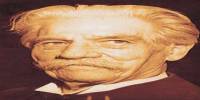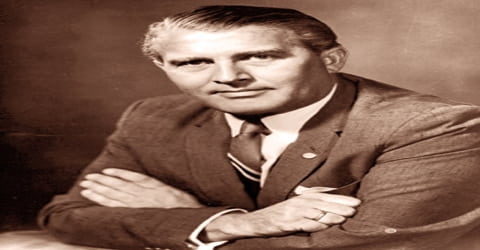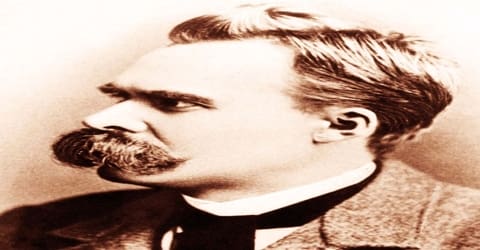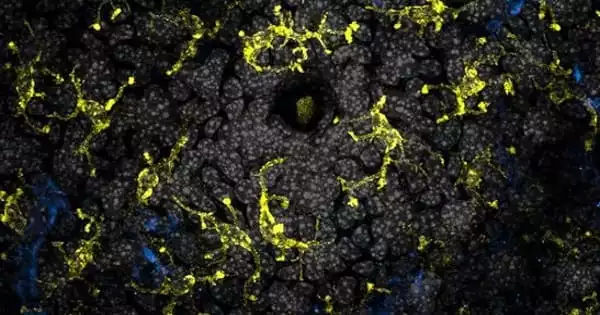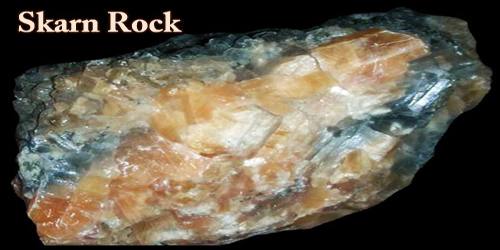Biography of Arnold Orville Beckman
Arnold Orville Beckman – American chemist, inventor, investor, and philanthropist.
Name: Arnold Orville Beckman
Date of Birth: April 10, 1900
Place of Birth: Cullom, Illinois
Date of Death: May 18, 2004 (aged 104)
Place of Death: La Jolla, California
Occupation: Chemists, Inventor, Philanthropist
Father: George Beckman
Mother: Elizabeth Ellen Jewkes
Spouse/Ex: Mabel Stone Meinzer (m. 1925)
Early Life
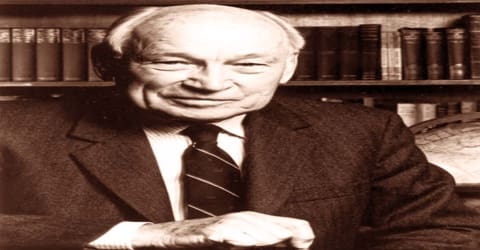
An American chemist, musician, college professor, industrialist and philanthropist, Arnold Orville Beckman was born on April 10, 1900, in Cullom, Illinois, a village of about 500 people in a farming community. While a professor at California Institute of Technology, he founded Beckman Instruments based on his 1934 invention of the pH meter, a device for measuring acidity, later considered to have “revolutionized the study of chemistry and biology”. He also developed the DU spectrophotometer, “probably the most important instrument ever developed towards the advancement of bioscience”.
Beckman is known for his scientific instruments. These include the electronic pH meter (a device for measuring acidity) and a variable resistance device called a Helipot®, which developed the study and understanding of human biology. His invention of the pH meter led to the formation of Beckman Instruments. He also funded the first silicon transistor company, thus giving rise to Silicon Valley.
With keen insight and eye for detail, Beckman always had a knack for solving problems. It was in his childhood that he chanced upon a textbook in chemistry and thus began his life-long association with the subject. While still in school, Beckman founded a business venture that analyzed the composition of natural gas. While working at the Western Electric Company he gained an in-depth understanding of electronic circuits. He utilized his knowledge of chemistry and electronics to solve many problems in his later life. He developed the world’s first pH meter that was used to measure the acidity of a given solution. He then created a device that could calculate the energy of light invisible, infra-red and UV spectrum. He modified the potentiometers used in the pH meter to develop the helipot that could be used in airplanes and ships. The chemist also worked with the Californian government in their efforts to mitigate the harmful effects of Los Angeles smog. He was also involved in the Manhattan Project, which created the nuclear bombs. Orville invented the dosimeter which could indicate the levels of exposure to ionizing radiation. The contributions of this inventor to the human race are numerous; read on to know more about his life and works.
Childhood, Family and Educational Life

A famous chemist, inventor, and philanthropist from America, Arnold Orville Beckman was born on April 10, 1900, in Cullom, Illinois, to parents George Beckman and Elizabeth Ellen Jewkes. George owned a blacksmith shop in the small village of Cullom in the United States. The village comprised of people mostly from the farming background but the young lad was always interested in understanding the know-how of the world. His father encouraged his inquisitive nature and when Arnold chanced upon a chemistry textbook titled, ‘Fourteen Weeks in Chemistry’; George helped him establish a laboratory of his own in a tool shed.
Beckman’s mother, Elizabeth, died of diabetes in 1912. Beckman’s father sold his blacksmith shop and became a traveling salesman for blacksmithing tools and materials. A housekeeper, Hattie Lange, was engaged to look after the Beckman children. Arnold Beckman earned money as a “practice pianist” with a local band, and as an “official cream tester” running a centrifuge for a local store.
From his early education in the small town, Beckman wanted to continue to study chemistry, but World War I broke loose, and he joined the Marines instead. After returning from the war, Beckham met his future wife, Mabel, at a Thanksgiving dinner. For the longest time, Beckman wanted to continue a degree in chemistry. By 1922, he received a Chemical Engineering degree from the University of Illinois.
While still in high school, Beckman started his own business, “Bloomington Research Laboratories”, doing analytic chemistry for the local gas company. He also performed at night as a movie-house pianist and played with local dance bands. He graduated valedictorian of his class, with an average of 89.41 over four years, the highest attained.
By 1924, he received his Master’s in Physical Chemistry. During this time, Beckman studied diligently and played the piano at the movie theaters to pay for his tuition and provide for his family. Once he finished his masters, he took them across the United States in pursuit of a Doctorate in Photochemistry at Caltech in 1928. After receiving a Ph.D. in photochemistry in 1928 for this application of quantum theory to chemical reactions, Beckman was asked to stay on at Caltech as an instructor and then as a professor.
Personal Life
During the thanksgiving of 1918, Arnold Orville Beckman met Mabel Stone Meinzer at YMCA, and before long the two got engaged.
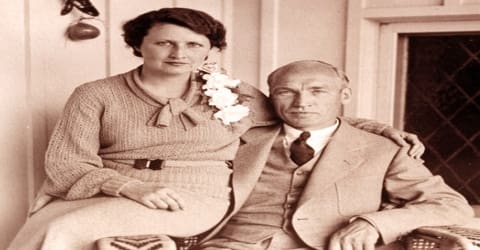
Beckman married Mabel on June 10, 1925. In 1926 the couple moved back to California and Beckman resumed his studies at Caltech.
Beckman also became interested in music at a young age. While in his teens and during his college days, Beckman played the piano. He formed his own dance band and also accompanied the silent movies at the local theater to help finance his family and education.
In 1933, Arnold Orville Beckman and his family built a home in Altadena, California, in the foothills and adjacent to Pasadena. They lived in Altadena for over 27 years, raising their family.
Career and Works
After completing High School with flying colors in 1918, Arnold Orville Beckman decided to join the army and served as a chemist for the defense forces employed in WWI. The same year on his eighteenth birthday, he decided to join the United States Marine Corps. He attended the three-month training in the boot camp in South Carolina and was then posted at the Brooklyn Navy Yard. But the ceasefire was enforced before he could be assigned to active service. After the WWI, he enrolled at the research inclusive ‘University of Illinois at Urbana-Champaign’, in 1918. Beckman, who had initially decided to pursue a major in organic chemistry, later opted for physical chemistry after suffering from ill health caused by toxic effects of mercury.
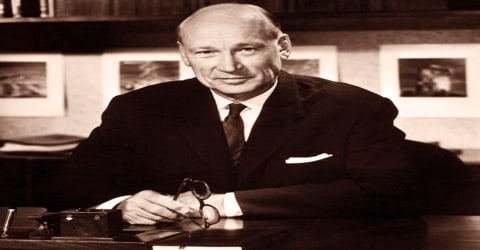
Beckman completed his Ph.D. in photochemistry at Caltech in 1928. The same year he became a member of the Caltech faculty and taught chemistry from 1929 to 1940. In 1929, the Great Depression hit the United States. Arnold Beckman completed his doctorate and was teaching as an assistant professor, but he was worried about his future. Luckily, an old friend presented him with a problem that needed a solution. The friend worked for a lemon and orange processing plant in Southern California. They needed a device that would measure the acidity of their fruit (only color tests were available to test pH at the time.)
Although Arnold Beckman loved science, his second greatest desire was to become a businessman. Taking up the challenge, he built the ‘acidimeter’, a device made of vacuum tubes that could measure the pH of fruits. Because of the Great Depression, Beckman was afraid that his expensive product would not sell. However, he would sell more than 500 of these acidimeters within two years. He once commented on this invention, saying, ”When you’re faced with the necessity to do something, that’s a stimulus to the invention. If (my classmate) hadn’t come in with his lemon juice problem, chances are I never in the world would have thought about making a pH meter.”
During his masters, Beckman was particularly interested in the thermodynamics of aqueous ammonia solutions. In the year 1923, he completed his masters in physical chemistry from Illinois. He then moved to California and enrolled at ‘California Institute of Technology’ (‘Caltech’) for his post-graduate studies. But only after a year at the institute, he left Caltech and took up a job in the ‘Western Electric Company’ in New York. It was working in the engineering department, that he was introduced to circuit design by physicist Walter A. Shewhart and thus began his fascination with electronics. In the year 1926, Beckman went back to Caltech to complete his post-graduate studies. For his doctoral dissertation, he worked on devising a method to calculate the energy of ultraviolet rays.
Beckman’s interest in electronics and his ability in designing measuring instruments made him very popular within the chemistry department. With the approval of Robert Millikan, Caltech’s president, Beckman began accepting outside consulting work. One of the clients, Sunkist was having problems. Sunkist wanted to know what the acidity of a certain product was at any given time. The methods then in use, such as litmus paper, were not working well. To solve the problem, Beckman built the first commercially successful electronic pH meter (originally called acidimeter) in 1935. Beckman formed the National Technical Laboratories (NTL) Company and began promoting the acidimeter through scientific-supply catalogs.
During his time at Caltech, Beckman was active in teaching at both the introductory and advanced graduate levels. Beckman shared his expertise in glass-blowing by teaching classes in the machine shop. He also taught classes in the design and use of research instruments. Beckman dealt first-hand with the chemists’ need for good instrumentation as manager of the chemistry department’s instrument shop. Beckman’s interest in electronics made him very popular within the chemistry department at Caltech, as he was very skilled in building measuring instruments. Over the time that he was at Caltech, the focus of the department increasingly moved towards pure science and away from chemical engineering and applied chemistry. Arthur Amos Noyes, head of the chemistry division, encouraged both Beckman and chemical engineer William Lacey to be in contact with real-world engineers and chemists, and Robert Andrews Millikan, Caltech’s president, referred technical questions to Beckman from government and businesses. With their blessing, Beckman began accepting outside work as a scientific and technical consultant. He also acted as a scientific expert in legal trials.
While working for the ‘National Postal Meter Company’ in 1934, Beckman embarked on his first entrepreneurial venture. Unable to find a manufacturer for making a non-clogging ink using butyric acid, which can be used by machines for printing postage, Beckman started his own ink manufacturing establishment ‘National Inking Appliance Company’. Though he developed the product and even obtained a patent for the non-clogging ink, he failed to convince any buyers. The company he started with two of his students was used later for a different product. Another of his client Sunkist Growers was facing difficulties while measuring the acidity of their products such as pectin or citric acid. As sulphur dioxide was a component used in the manufacture of the products, using litmus paper to determine acidity was not a viable solution. When the company approached Arnold, he utilized his skills in glassblowing, to design a vacuum-tube amplifier. Impressed by the working prototype of the apparatus, the company ordered for a second piece.
By October 1934, Beckman had registered patent application US Patent No. 2,058,761 for his “acidimeter”, later renamed the pH meter. The Arthur H. Thomas Company, a nationally known scientific instrument dealer based in Philadelphia, was willing to try selling it. Although it was priced expensively at $195, roughly the starting monthly wage for a chemistry professor at that time, it was significantly cheaper than the estimated cost of building a comparable instrument from individual components, about $500. The original pH meter weighed in at nearly 7 kg but was a substantial improvement over a benchful of delicate equipment. The earliest meter had a design glitch, in that the pH readings changed with the depth of immersion of the electrodes, but Beckman fixed the problem by sealing the glass bulb of the electrode.
Propelled by the success of the pH meter, Beckman reinvented his company and named it ‘National Technical Laboratories’ in 1935. With the new company, he focussed on manufacturing scientific instruments which included the pH meter. The company moved out of the old garage to a bigger precinct and as the sales picked up over the years, Orville quit his job at the university to handle the operations of his company in 1939. The following year, his loan for establishing a factory was approved and the manufacturing unit was built over a sprawling area of 12,000 sq.ft. in South Pasasena. Also in 1940, the research team of National Technical set out on the goal of designing a simpler device for measuring the light energy invisible spectrum. The resulting model was easy-to-use and efficient, received the credibility of the ‘National Bureau of Standards’ and was named as the ‘DU spectrophotometer’. The device significantly reduced the time required for obtaining results from the chemical analysis of samples. The spectrophotometer was also used in the production of penicillin during WWII.
Beckman continued with inventing and building scientific instruments, including the Beckman DU ultraviolet spectrophotometer (1940) and the Beckman IR-1 infrared-visible spectrophotometer (1942). His company changed its name in 1950 to Beckman Instruments, Inc.
In 1952, Beckman began a company that would later be called Beckman Instruments, which still operates today (now called Beckman Coulter). The company was designed to invent chemistry instruments that would help with research. Before opening it up as a public company, most of the devices were for military efforts or large chemical facilities, such as the citrus farms. But Beckman’s devices transformed the nation nevertheless.
Beckman’s DU spectrophotometer has been referred to as the “Model T” of scientific instruments: “This device forever simplified and streamlined chemical analysis, by allowing researchers to perform a 99.9% accurate quantitative measurement of a substance within minutes, as opposed to the weeks required previously for results of only 25% accuracy.” Theodore L. Brown notes that it “revolutionized the measurement of light signals from samples”. Nobel laureate Bruce Merrifield is quoted as calling the DU spectrophotometer “probably the most important instrument ever developed towards the advancement of bioscience.”
Another important invention by Beckman came in the year 1942 when he was handed the assignment to develop a spectrophotometer that could measure the light energy in the infrared zone. Beckman was instructed to be highly discreet by the ‘Office of Rubber Reserve’, thus he could not publish the developments of his ‘IR-1 Spectrophotometer’. He improvised the model of IR-1 Spectrophotometer to encompass the choice of using a single beam of light or double beam for analysis, in 1953. The earlier model only had the option of using a single infrared beam but the dual beam model allowed users to calculate and compare sample energy with a reference, simultaneously.
Beckman also improvised the design of the knob or the helical potentiometer dubbed as “helipot” so that they could be used in airplanes, ships or submarines. With a board, which was still wary of the emerging field of electronics, Beckman started ‘Helipot Corporation’ which dealt with electronics hardware. The perspicacious inventor was then involved in the production of the ‘Pauling oxygen meter’ for the ‘National Defense Research Committee’, which was designed by his ex-colleague at Caltech, Linus Pauling. The device was manufactured by ‘Arnold O. Beckman, Inc.’, another spinoff and Arnold used a miniature glass-blower designed by him to create the glass dumbbells used in the oxygen meter. The device which was initially used to measure the concentration of oxygen in submarines and airplanes during the World War was later used to supervise the oxygen levels in incubators used for premature babies. The micro-ammeter, he invented by remodeling his pH meter and the dosimeter, used for measuring exposure to ionizing radiation, was utilized by the scientists working on the ‘Manhattan Project’ during WWII.
In 1947, California governor Earl Warren signed a statewide air pollution control act, authorizing the creation of Air Pollution Control Districts (APCDs) in every county of the state. The Los Angeles Chamber of Commerce asked Beckman to represent them in dealing with the creation of a local APCD. The new APCD, when formed, asked Beckman to become the scientific consultant to the Air Pollution Control Officer. He held the position from 1948 to 1952. Beckman designed a device to measure the smog and outlined an advisory charter for the Californian governor. He also contributed to the creation of the non-profit ‘Air Pollution Foundation’, which served to educate masses and raise funds for further research on smog.
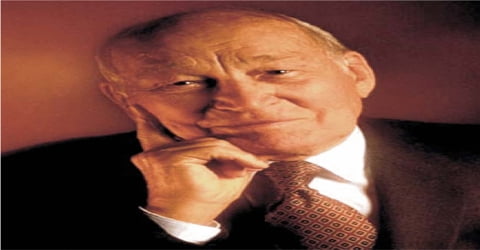
In 1950, ‘National Technical Laboratories’ was rechristened and by then Orville owned a controlling interest in the company. ‘Beckman Instruments, Incorporated’, issued stocks on the ‘New York Curb Exchange’ for the first time in 1952 and in subsequent years the company underwent significant expansion. In 1954, with the acquisition of ‘Specialized Instruments Corp.’, Beckman Instruments delved into the manufacture of centrifuges. The following year Arnold he funded the ‘Shockley Semiconductor Laboratory’ which was established as a subsidiary of his own company and was headed by the Nobel laureate William Shockley.
Beckman got in touch with a Caltech professor who was working on smog, Arie Jan Haagen-Smit. While Haagen-Smit worked out the genesis of smog, Beckman developed an instrument to measure it. On October 7, 1952, he was granted a patent for an “oxygen recorder” that used colorimetric methods to measure the levels of compounds present in the atmosphere. Beckman Instruments eventually developed a range of instruments for various uses in monitoring and treating automobile exhaust and air pollution. They even produced “air quality monitoring vans”, customized laboratories on wheels for use by government and industry.
In 1958, Beckman integrated the ‘Helipot Corporation’ into Beckman Instruments and named it the Helipot Division. Two years later he sold the semiconductor laboratory to ‘Clevite Transistor Company’. The Systems Division, in Arnold’s company, which was formed after acquiring the ‘Berkeley Scientific Company’ during the 1950s, dealt with manufacture of analog computer systems for clients which included NASA and aerospace companies like Boeing.
In 1960, Beckman sold the Shockley subsidiary to the Clevite Transistor Company, ending his formal association with semiconductors. Nonetheless, Beckman had been an essential backer of the new industry in its initial stages. After he retired in 1983, Beckman focused on charity work. He established several foundations and contributed huge amounts of dollars to scientific study and education.
Awards and Honor
Arnold Orville Beckman was given esteemed honors and awards for his accomplishments. Beckman was elected a Fellow of the American Academy of Arts and Sciences in 1976. He was inducted into the Junior Achievement US Business Hall of Fame in 1985.
In 1987, Beckman was inducted into the National Inventors Hall of Fame in Akron, Ohio. In 2004 he received its Lifetime Achievement Award.
In 1988, Beckman was given the ‘National Medal of Technology’ and the following year he received the ‘National Medal of Science and ‘Presidential Citizens Medal’.
In 1989, Beckman received the Charles Lathrop Parsons Award for public service from the American Chemical Society. He was inducted into the Alpha Chi Sigma Hall of Fame in 1996. In 2000, he received a Special Millennium Edition of the Othmer Gold Medal from the Chemical Heritage Foundation in recognition of his multifaceted contributions to chemical and scientific heritage.
Death and Legacy
Arnold Orville Beckman died May 18, 2004, at the age of 104, in hospital in La Jolla, Calif. Mabel and Arnold Beckman are buried beneath a simple headstone in West Lawn Cemetery in Cullom, Illinois, the small town where he was born.
Throughout his career, Arnold invented many devices like the pH meter, spectrometer, dosimeter, and the helical potentiometer. His company the ‘Beckman Instruments’ became one of the leading American manufactures of biomedical laboratory instruments. Berliner was even involved in the emerging field of computers and contributed to what became Silicon Valley.
The Arnold O. Beckman High School in Irvine, California which has a focus in science education, was named in honor of Arnold O. Beckman. It was not, however, funded by Beckman.
The Beckman Coulter Heritage exhibit, which discusses the work of scientists Arnold Beckman and Wallace Coulter, is located at the Beckman Coulter headquarters in Brea, California.
Information Source:

